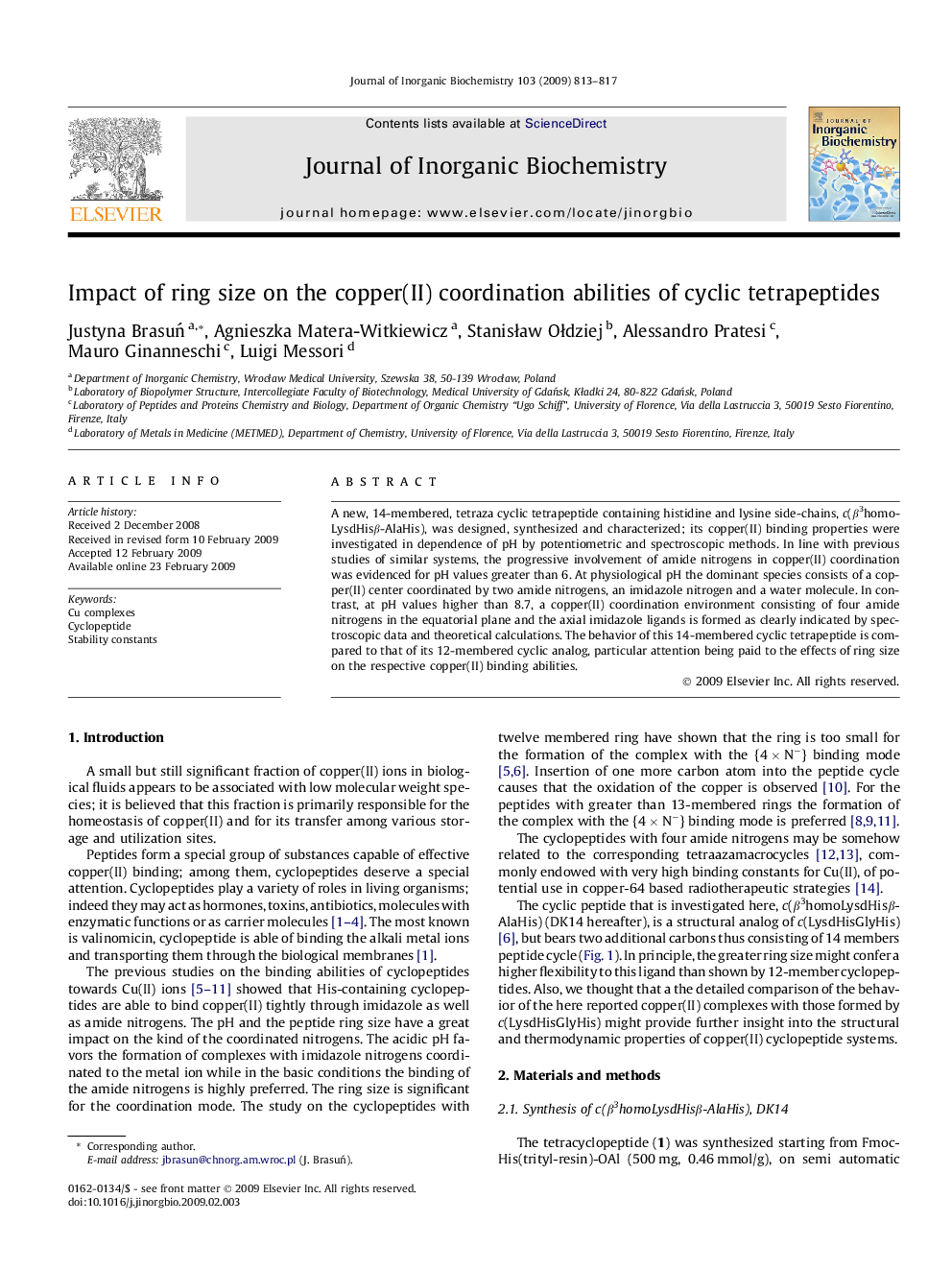| Article ID | Journal | Published Year | Pages | File Type |
|---|---|---|---|---|
| 1317359 | Journal of Inorganic Biochemistry | 2009 | 5 Pages |
A new, 14-membered, tetraza cyclic tetrapeptide containing histidine and lysine side-chains, c(β3homoLysdHisβ-AlaHis), was designed, synthesized and characterized; its copper(II) binding properties were investigated in dependence of pH by potentiometric and spectroscopic methods. In line with previous studies of similar systems, the progressive involvement of amide nitrogens in copper(II) coordination was evidenced for pH values greater than 6. At physiological pH the dominant species consists of a copper(II) center coordinated by two amide nitrogens, an imidazole nitrogen and a water molecule. In contrast, at pH values higher than 8.7, a copper(II) coordination environment consisting of four amide nitrogens in the equatorial plane and the axial imidazole ligands is formed as clearly indicated by spectroscopic data and theoretical calculations. The behavior of this 14-membered cyclic tetrapeptide is compared to that of its 12-membered cyclic analog, particular attention being paid to the effects of ring size on the respective copper(II) binding abilities.
